- Marjoram: Essential Herb for Vegetable Gardens
- 1. Culinary Uses
- 2. Medicinal Properties
- 3. Attracts Beneficial Insects
- 4. Companion Plant
- 5. Easy to Grow
- 6. Varieties
- Growing Marjoram: The Basics
- Introduction
- Choosing the Right Variety
- Planting
- Care and Maintenance
- Harvesting and Storage
- Benefits and Properties of Marjoram
- Popular Varieties of Marjoram
- How to Care for Marjoram Plants
- 1. Planting
- 2. Watering
- 3. Fertilizing
- 4. Pruning
- 5. Harvesting
- 6. Winter Care
- Harvesting and Storing Marjoram
- Harvesting Marjoram Leaves
- Drying Marjoram
- Storing Marjoram
- Freezing Marjoram
- Culinary Uses of Marjoram in the Kitchen
- Seasoning for Meat and Fish
- Enhancing Vegetable Dishes
- Flavoring Pasta and Rice Dishes
- Sweet Recipes
- Herbal Teas
- Medicinal Uses of Marjoram for Health and Wellness
- 1. Digestive Health
- 2. Respiratory Health
- 3. Pain Relief
- 4. Stress and Anxiety Relief
- 5. Antimicrobial Properties
- 6. Heart Health
- 7. Antioxidant Activity
- Marjoram in Traditional and Folklore Practices
- “Question-Answer”
- What is marjoram and how is it used in cooking?
- Can marjoram be grown in a vegetable garden?
- What are the properties of marjoram?
- What are some popular varieties of marjoram?
- How is marjoram grown?
- Can marjoram be used as a natural remedy?
- What are the culinary uses of marjoram?
- “Video” How to grow Sweet Marjoram (Origanum majorana) from seeds
Marjoram is an aromatic herb that is commonly grown in vegetable gardens for its culinary and medicinal properties. It is known for its delicate flavor and pleasant aroma, which is often described as a combination of oregano and thyme. Marjoram is a versatile herb that can be used fresh or dried in a variety of dishes, including soups, stews, sauces, and marinades. It also has a number of health benefits, as it is believed to have antioxidant, anti-inflammatory, and antimicrobial properties.
When it comes to growing marjoram in the vegetable garden, it is important to choose a sunny spot with well-draining soil. Marjoram plants prefer full sun, but can tolerate partial shade. The soil should be rich in organic matter and have a pH level of around 6.0 to 7.0. It is best to start marjoram from seeds or transplants, which can be planted in the spring after the danger of frost has passed. The plants should be spaced about 10 to 12 inches apart to allow for proper air circulation and growth.
There are several varieties of marjoram to choose from, including sweet marjoram (Origanum majorana) and wild marjoram (Origanum vulgare). Sweet marjoram is a popular choice for culinary purposes, as it has a milder flavor and is often used in Mediterranean and Middle Eastern dishes. Wild marjoram, also known as oregano, has a stronger flavor and is commonly used in Italian and Greek cuisine. Both varieties can be grown in the vegetable garden and are relatively easy to care for.
Marjoram: Essential Herb for Vegetable Gardens
Marjoram is an essential herb for vegetable gardens. It not only adds flavor to dishes but also offers various health benefits. Here are some reasons why marjoram is a must-have in your garden:
1. Culinary Uses
Marjoram is a popular herb in Mediterranean cuisine. Its leaves are used fresh or dried to flavor soups, stews, sauces, and various meat dishes. It has a delicate, sweet, and slightly citrusy flavor that enhances the taste of many dishes.
2. Medicinal Properties
Marjoram is known for its medicinal properties. It contains essential oils that have anti-inflammatory, antioxidant, and antibacterial effects. It can help improve digestion, relieve respiratory issues, and promote heart health.
3. Attracts Beneficial Insects
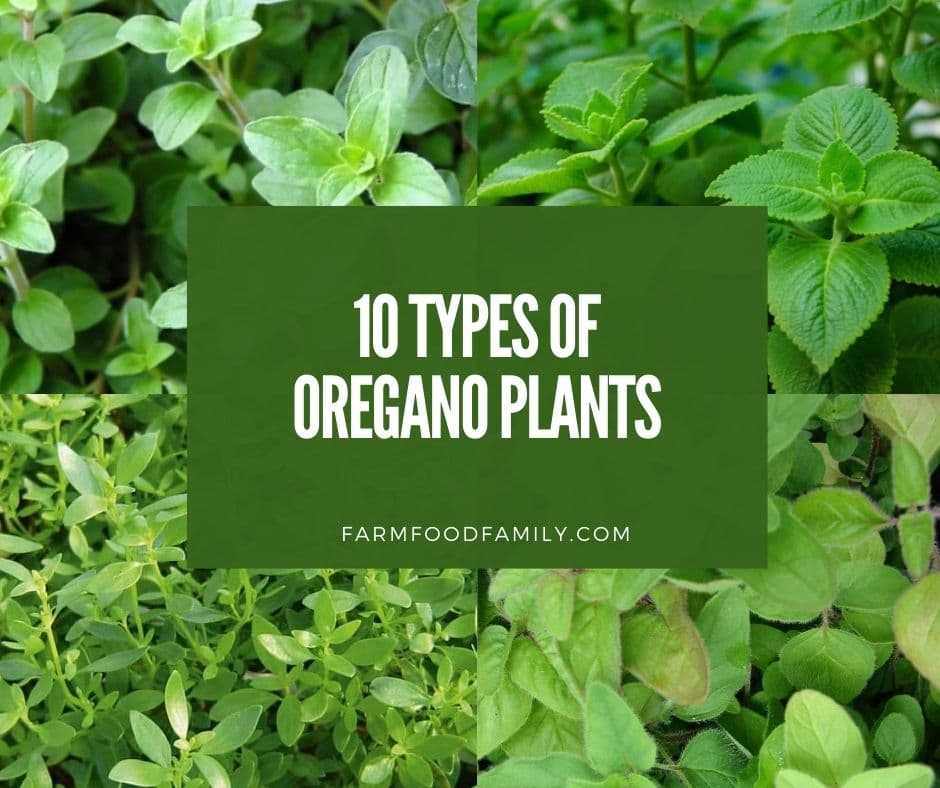
Marjoram flowers attract bees, butterflies, and other pollinators to your vegetable garden. These beneficial insects help in the pollination process, promoting the growth and yield of your vegetables.
4. Companion Plant
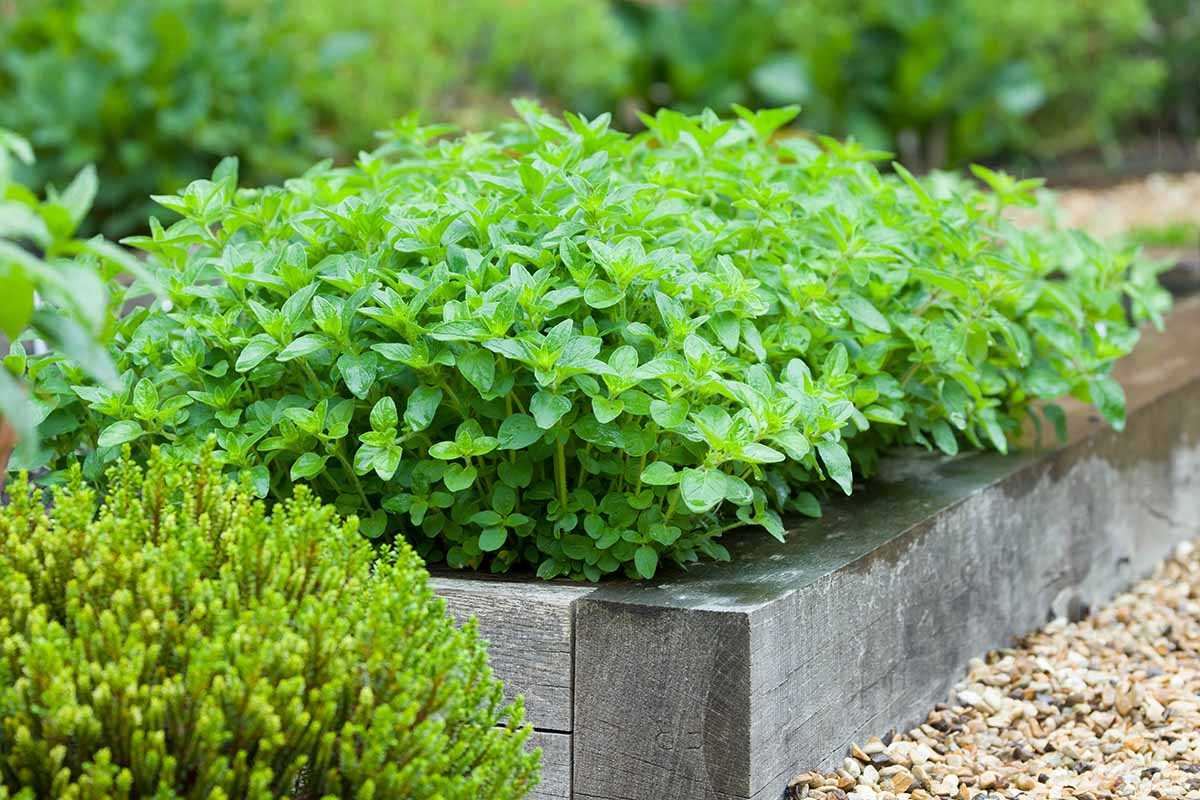
Marjoram is a great companion plant for many vegetables. It repels pests like aphids, cabbage moths, and spider mites, reducing the need for chemical pesticides. Additionally, it enhances the flavor and growth of neighboring plants like tomatoes, peppers, and eggplants.
5. Easy to Grow
Marjoram is a relatively easy herb to grow in your vegetable garden. It prefers well-drained soil and full sun but can tolerate partial shade. It can be grown from seeds or transplanted seedlings. Regular watering and occasional pruning will help promote healthy growth.
6. Varieties
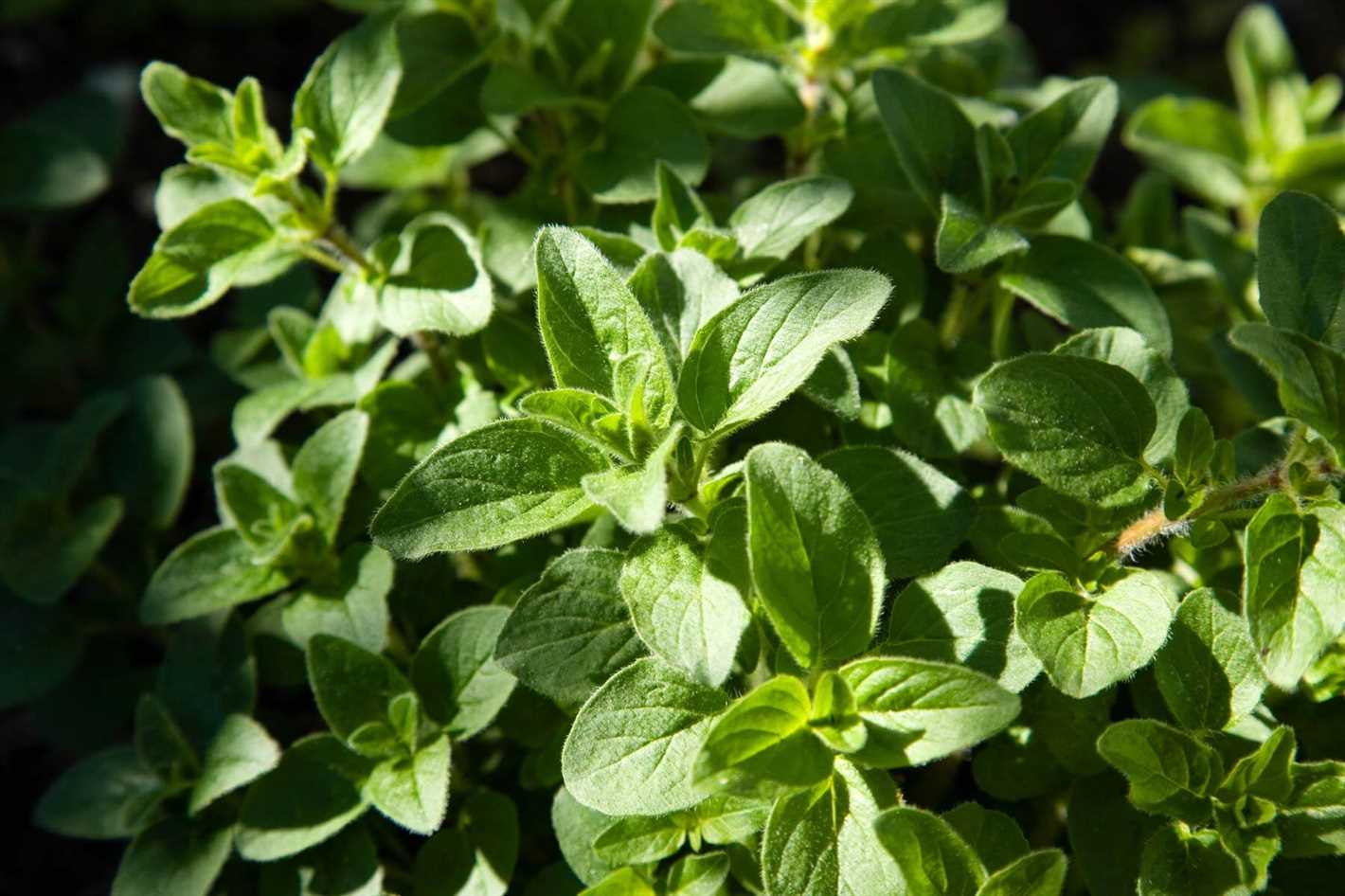
There are several varieties of marjoram available, including Sweet Marjoram (Origanum majorana), Pot Marjoram (Origanum onites), and Italian Marjoram (Origanum x majoricum). Each variety has slightly different flavors and growth habits, so you can choose the one that suits your culinary preferences and garden conditions.
Overall, marjoram is a versatile herb that adds both flavor and health benefits to your vegetable garden. Whether you use it in your cooking or as a companion plant, it is an essential addition to any garden.
Growing Marjoram: The Basics
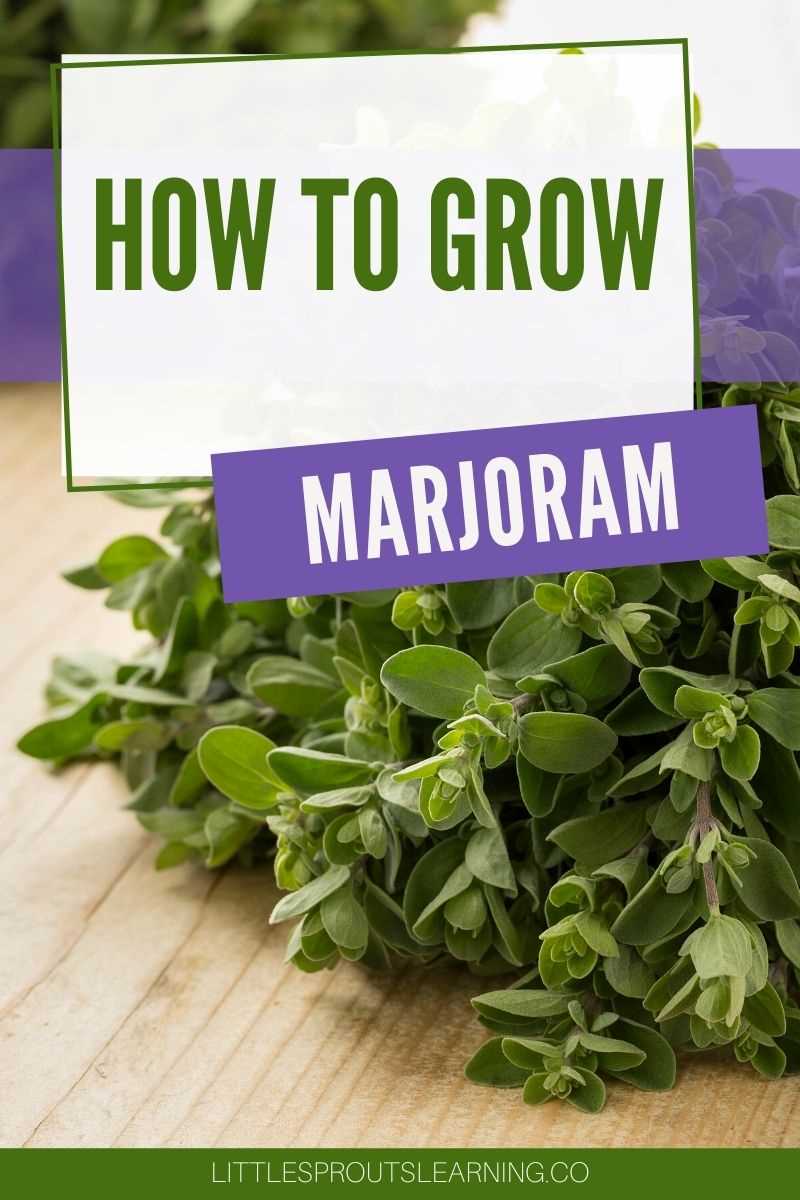
Introduction
Marjoram is a popular herb that is widely used in Mediterranean and Middle Eastern cuisines. It has a delicate, sweet flavor that adds a subtle hint to dishes. Growing marjoram in your vegetable garden is a great way to have a fresh supply of this herb at hand for your culinary creations.
Choosing the Right Variety
There are several different varieties of marjoram available, and choosing the right one for your vegetable garden is essential. Some popular varieties include:
- Sweet Marjoram (Origanum majorana): This is the most commonly grown variety. It has a milder flavor compared to other varieties.
- Potent Marjoram (Origanum onites): This variety has a stronger flavor and is often used in Greek cuisine.
- Golden Marjoram (Origanum vulgare ‘Aureum’): This variety has golden-colored leaves, adding a decorative touch to your garden.
Planting
Marjoram is a perennial herb that can be grown from seeds or transplants. It prefers a sunny location with well-drained soil. Here are the basic steps for growing marjoram:
- Prepare the soil by removing any weeds and adding organic matter.
- Sow the seeds or transplant the seedlings into the prepared soil, spacing them 10-12 inches apart.
- Water the plants regularly, keeping the soil evenly moist but not waterlogged.
- Apply a balanced fertilizer every 4-6 weeks to promote healthy growth.
- Harvest the leaves as needed once the plants have become established.
Care and Maintenance
Marjoram is a relatively low-maintenance herb, but it still requires some care to thrive. Here are a few tips to keep in mind:
- Keep the soil evenly moist, but avoid overwatering, as this can lead to root rot.
- Pinch back the tips of the plants regularly to encourage bushier growth.
- Prune the plants in early spring to remove any dead or damaged growth.
- Protect the plants from extreme cold by covering them or bringing them indoors during the winter.
Harvesting and Storage
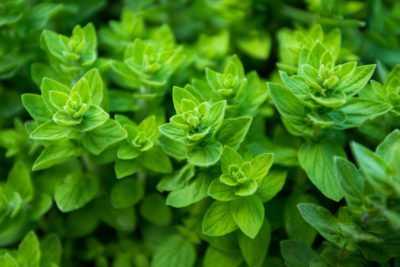
Harvesting marjoram leaves can be done throughout the growing season. Simply snip off the leaves as needed, taking care not to remove too much from one plant at a time. Marjoram can be used fresh or dried for later use. To dry the leaves, hang them upside down in a warm, well-ventilated area until they become crispy. Store the dried leaves in an airtight container away from direct sunlight.
Benefits and Properties of Marjoram
- Antioxidant properties: Marjoram contains high levels of antioxidants, which help protect the body against damage from harmful free radicals. These antioxidants can help reduce the risk of chronic diseases, such as heart disease and cancer.
- Anti-inflammatory effects: Marjoram contains compounds that have anti-inflammatory properties. These compounds can help reduce inflammation in the body, which is associated with various health conditions, including arthritis and inflammatory bowel disease.
- Antimicrobial activity: Marjoram has antimicrobial properties, which means it can help fight against certain types of bacteria and fungi. This can be beneficial for maintaining a healthy gut and preventing infections.
- Digestive aid: Marjoram has traditionally been used as a digestive aid, helping to soothe the digestive system and relieve symptoms such as indigestion and stomach cramps.
- Respiratory health: Marjoram has been used to support respiratory health and relieve symptoms of respiratory conditions, such as coughs, congestion, and bronchitis.
- Stress relief: Marjoram has calming properties that can promote relaxation and help reduce stress and anxiety. It can be used in aromatherapy or added to bathwater to provide a soothing effect.
- Cardiovascular health: Marjoram may help support cardiovascular health by reducing blood pressure and improving blood circulation. It may also help lower cholesterol levels and prevent the formation of blood clots.
These are just a few of the many benefits and properties of marjoram. It is a versatile and beneficial herb that can be incorporated into various dishes and preparations to enhance both the flavor and health benefits of the food.
Popular Varieties of Marjoram
Marjoram, a versatile and aromatic herb, comes in various varieties. Here are some popular ones:
Sweet Marjoram (Origanum majorana): This is the most common variety of marjoram and is known for its sweet and delicate flavor. It is often used in culinary dishes, especially in Mediterranean cuisine. Sweet marjoram is also a popular choice for herbal teas and infused oils.
Pot Marjoram (Origanum onites): Also known as Cretan oregano, pot marjoram has a stronger and more robust flavor compared to sweet marjoram. It is commonly used in stews, meat dishes, and tomato-based sauces. Pot marjoram is also a favorite aromatic herb in Greek and Turkish cuisines.
Wild Marjoram (Origanum vulgare): Wild marjoram, also known as oregano or common oregano, is a perennial plant with a pungent and peppery flavor. It is widely used in Italian, Mexican, and Mediterranean cuisines. Wild marjoram is also a popular ingredient in herbal remedies and natural insect repellents.
Golden Marjoram (Origanum vulgare ‘Aureum’): This variety of marjoram has golden-yellow foliage, adding an ornamental touch to gardens and containers. Golden marjoram has a similar flavor profile to wild marjoram and can be used in cooking, but it is often valued more for its decorative appeal.
These are just a few examples of the many marjoram varieties available. Each variety offers its own unique flavor and aroma, allowing you to experiment and explore different culinary and gardening possibilities.
How to Care for Marjoram Plants
Marjoram plants are easy to care for and can thrive in a vegetable garden with minimal effort. Here are some tips for caring for your marjoram plants:
1. Planting
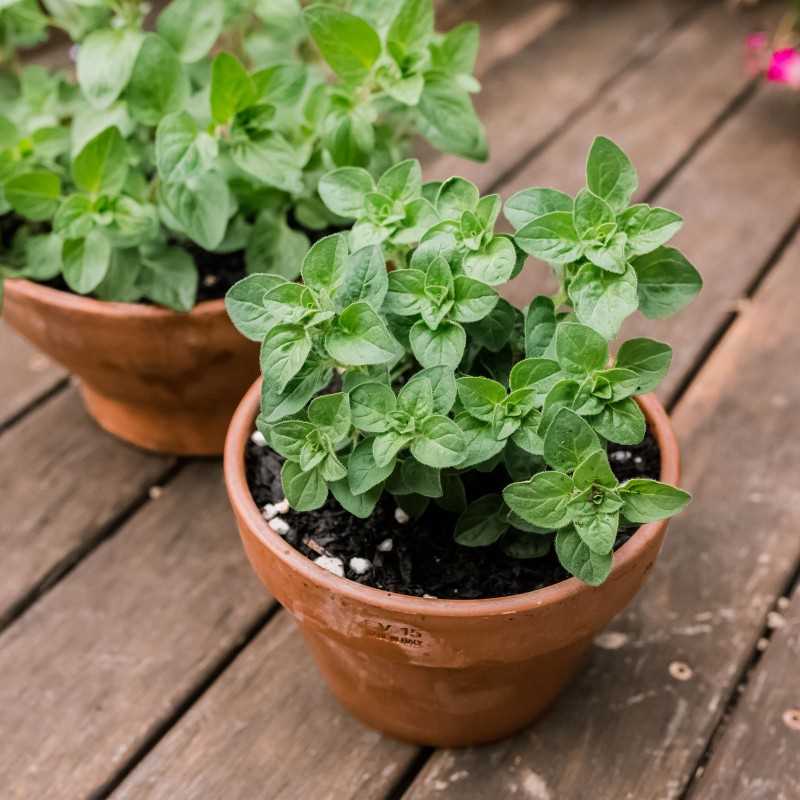
Choose a sunny location in your garden to plant your marjoram. Marjoram plants prefer well-drained soil, so make sure the soil is loose and not waterlogged. You can sow the seeds directly in the garden or start them indoors and transplant them once they are about 6 inches tall.
2. Watering
Marjoram plants have moderate water needs. Water them thoroughly once a week, allowing the soil to dry out slightly between waterings. Avoid overwatering as this can lead to root rot.
3. Fertilizing
Marjoram plants do not require much fertilizing. You can apply a balanced fertilizer once or twice during the growing season to promote healthy growth. Avoid using high nitrogen fertilizers, as this can result in excessive leafy growth at the expense of flavor.
4. Pruning
Regular pruning will help keep your marjoram plants bushy and prevent them from becoming leggy. Pinch off the tips of the stems regularly to encourage branching. You can also prune off any dead or diseased leaves to maintain the health of the plant.
5. Harvesting
You can start harvesting marjoram leaves once the plant reaches about 6 inches in height. Harvest the leaves in the morning, after the dew has dried but before the sun is at its hottest. You can harvest the leaves by cutting them with scissors or pinching them off with your fingers.
6. Winter Care
In colder climates, marjoram plants may not survive the winter outdoors. Before the first frost, you can dig up your marjoram plants and transplant them into pots. Place the pots in a sunny window indoors and continue to care for them as usual. Alternatively, you can take cuttings from your marjoram plant and root them indoors to grow new plants for the following year.
By following these care tips, you can enjoy a healthy and productive marjoram plant in your vegetable garden. Whether you use it for culinary purposes or for its medicinal properties, marjoram is a versatile and rewarding herb to grow.
Harvesting and Storing Marjoram
Harvesting marjoram is a simple process that can be done throughout the growing season. The best time to harvest the leaves is just before the plant flowers, as this is when the flavor is at its peak.
Harvesting Marjoram Leaves
To harvest marjoram leaves, use a pair of clean, sharp scissors or garden shears. Cut the stems just above a set of leaves to encourage new growth. Avoid cutting more than one-third of the plant at a time in order to keep it healthy and productive.
Drying Marjoram
To dry marjoram, gather the stems into small bundles and hang them upside down in a cool, dark, and well-ventilated area. Make sure to tie the bundles securely to prevent them from falling apart. It usually takes about one to two weeks for marjoram to dry completely.
Storing Marjoram

Once the marjoram leaves are dried, remove them from the stems and store them in an airtight container. Whole leaves can be crumbled or ground into a powder before storage, depending on personal preference.
It is important to store marjoram in a cool, dark place, away from direct sunlight and heat sources. This will help to preserve the flavor and aroma of the herb for a longer period of time.
Freezing Marjoram
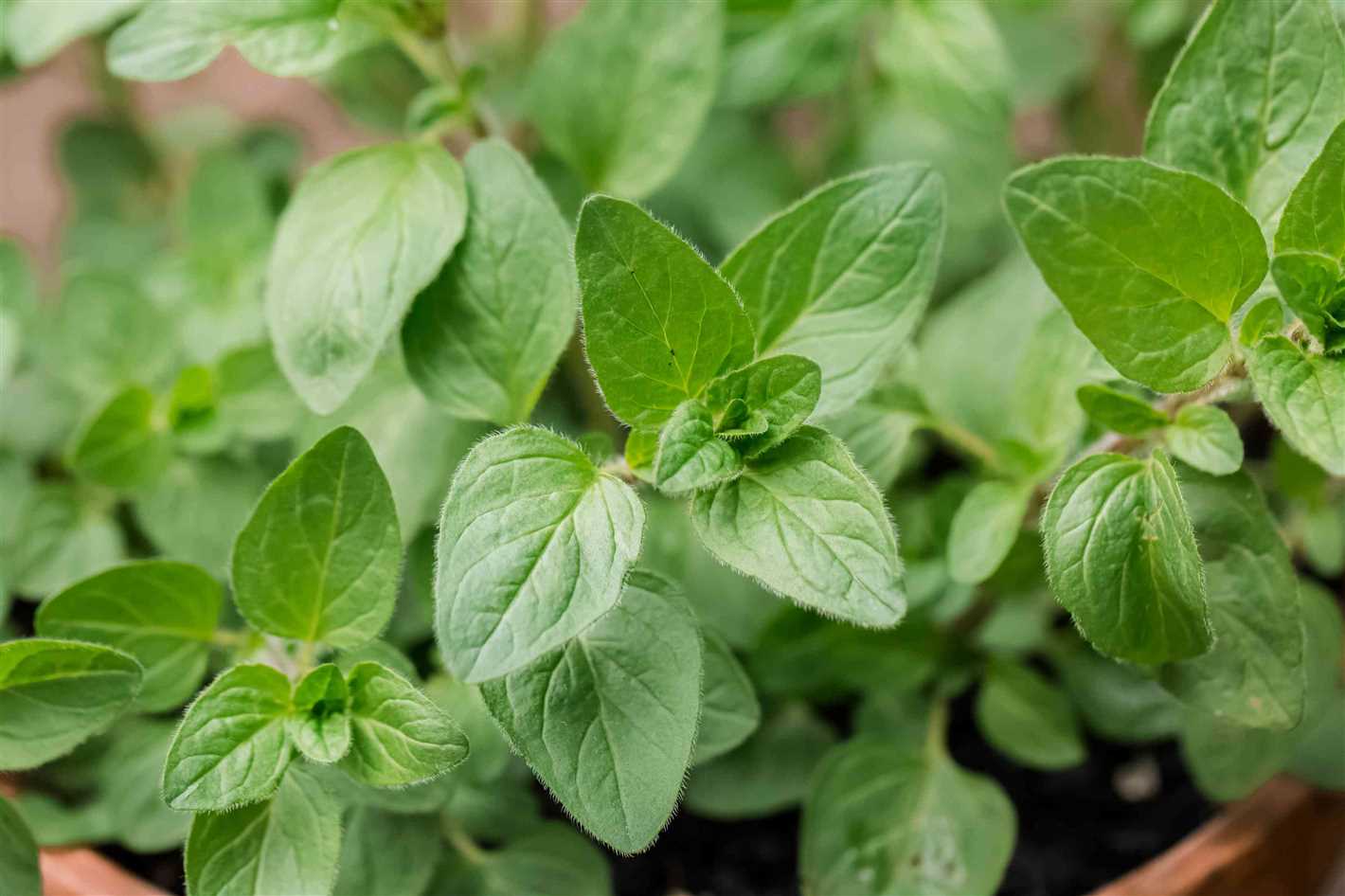
If you prefer to freeze marjoram for future use, you can either freeze the whole sprigs or chop the leaves and freeze them in ice cube trays with a little water or oil. Once frozen, transfer the marjoram cubes into a freezer-safe bag or container.
When using frozen marjoram, it is best to add it directly to recipes without thawing, as thawing can cause the leaves to become limp and lose some of their flavor.
Culinary Uses of Marjoram in the Kitchen
Marjoram is a versatile herb that can be used in a variety of culinary dishes. Its aromatic and slightly sweet flavor adds depth to both savory and sweet recipes. Here are some popular culinary uses of marjoram in the kitchen:
Seasoning for Meat and Fish
- Add marjoram to marinades, rubs, or sauces for chicken, turkey, pork, beef, or lamb.
- Combine marjoram with other herbs like thyme, rosemary, and sage for a flavorful blend.
- Sprinkle marjoram on grilled or roasted fish for an extra layer of flavor.
Enhancing Vegetable Dishes
- Use marjoram to season sautéed or roasted vegetables like potatoes, tomatoes, zucchini, or eggplant.
- Add marjoram to vegetable soups, stews, or sauces for a delicious herbal note.
- Incorporate marjoram into stuffing recipes for Thanksgiving or other holiday meals.
Flavoring Pasta and Rice Dishes
- Sprinkle marjoram on pasta dishes like spaghetti or fettuccine for added flavor.
- Stir marjoram into risotto, pilaf, or other rice-based dishes.
Sweet Recipes
- Infuse marjoram into custards, creams, or ice creams for a unique twist.
- Add marjoram to fruit-based desserts like pies or tarts.
Herbal Teas
Marjoram can also be brewed into a soothing herbal tea that has a relaxing effect on the body. Steep a few fresh or dried marjoram leaves in hot water for a few minutes, then strain and enjoy. You can add honey or lemon for extra flavor.
In conclusion, marjoram is a versatile herb that can be utilized in various culinary dishes, ranging from meat and fish to vegetables and sweets. Its aromatic and slightly sweet flavor enhances the overall taste of the recipes, making it an excellent addition to any kitchen.
Medicinal Uses of Marjoram for Health and Wellness
Marjoram, also known as Origanum majorana, is a versatile herb with numerous medicinal properties that have been used for centuries in traditional medicine. Here are some of the health benefits and uses of marjoram:
1. Digestive Health
Marjoram is known for its digestive properties and can help alleviate various digestive issues such as indigestion, bloating, and cramps. It can stimulate the production of digestive enzymes and improve overall digestion.
2. Respiratory Health
The essential oil of marjoram has expectorant properties and can provide relief from respiratory problems such as cough, bronchitis, and asthma. It can help to loosen phlegm and mucus, making it easier to breathe.
3. Pain Relief
Marjoram contains anti-inflammatory compounds that can help reduce inflammation and relieve pain. It can be applied topically to sore muscles and joints to alleviate pain and promote relaxation.
4. Stress and Anxiety Relief
Marjoram has calming and sedative properties that can help reduce stress, anxiety, and insomnia. It can promote relaxation and improve sleep quality when taken as a tea or used in aromatherapy.
5. Antimicrobial Properties
The antimicrobial properties of marjoram make it effective in fighting against various pathogens, including bacteria and fungi. It can be used topically to treat skin infections and promote wound healing.
6. Heart Health
Marjoram has been shown to have cardioprotective effects and can help reduce the risk of heart disease. It can help regulate blood pressure and cholesterol levels, promoting overall heart health.
7. Antioxidant Activity
Marjoram is rich in antioxidants that can help combat oxidative stress and protect the body against damage from free radicals. It can stimulate the production of antioxidant enzymes and support overall health and wellness.
| Health Benefit | Uses |
|---|---|
| Digestive Health | Alleviates indigestion, bloating, and cramps |
| Respiratory Health | Relieves cough, bronchitis, and asthma |
| Pain Relief | Reduces inflammation and alleviates pain |
| Stress and Anxiety Relief | Reduces stress, anxiety, and insomnia |
| Antimicrobial Properties | Fights against bacteria and fungi |
| Heart Health | Regulates blood pressure and cholesterol |
| Antioxidant Activity | Combats oxidative stress and protects against free radicals |
Marjoram in Traditional and Folklore Practices
Marjoram has been used in traditional and folklore practices for centuries. Its aromatic and medicinal properties have made it a popular herb in various cultures around the world. Here are some traditional uses and beliefs associated with marjoram:
- Medicinal Uses: Marjoram has been used in traditional medicine to treat various ailments. It is believed to have anti-inflammatory, antiseptic, and antimicrobial properties. It has been used to relieve digestive issues, menstrual cramps, and headaches. Marjoram oil is commonly used in aromatherapy to promote relaxation and relieve stress.
- Culinary Uses: Marjoram is a popular culinary herb used in various cuisines. Its delicate flavor and aroma make it a great addition to soups, stews, sauces, and meat dishes. It is often used to enhance the taste of fish, poultry, and vegetables.
- Rituals and Spells: In some cultures, marjoram is believed to have magical properties. It has been used in rituals and spells to attract love, bring good luck, and protect against negative energies. The herb is sometimes used in love potions and incense for these purposes.
- Symbolism: Marjoram has been associated with various symbolic meanings. In some cultures, it is considered a symbol of happiness, protection, and healing. It is believed to bring peace and harmony to those who use it.
Overall, marjoram continues to be valued not only for its culinary uses but also for its medicinal and symbolic significance in traditional and folklore practices. Its versatility and aromatic properties make it a cherished herb in many cultures.
“Question-Answer”
What is marjoram and how is it used in cooking?
Marjoram is a herb that belongs to the mint family and is commonly used in Mediterranean cuisine. It is known for its sweet and slightly citrusy flavor and is often used to season meats, soups, and sauces.
Can marjoram be grown in a vegetable garden?
Yes, marjoram can be grown in a vegetable garden. It is a hardy herb that can tolerate a variety of growing conditions and is relatively easy to cultivate.
What are the properties of marjoram?
Marjoram has several properties that make it beneficial for health and wellness. It is believed to have anti-inflammatory and antimicrobial properties, and it may also help improve digestion and promote relaxation.
What are some popular varieties of marjoram?
There are several popular varieties of marjoram, including Sweet Marjoram, Golden Marjoram, and Greek Marjoram. Each variety has its own unique flavor profile and culinary uses.
How is marjoram grown?
Marjoram can be grown from seeds or purchased as young plants from a nursery. It prefers full sun and well-drained soil. It can be grown in pots or directly in the garden, and regular pruning can help promote growth and prevent legginess.
Can marjoram be used as a natural remedy?
Yes, marjoram is known for its medicinal properties and can be used as a natural remedy for various ailments. It can be made into teas, tinctures, or infused oils to help with issues such as digestion, coughs, and anxiety.
What are the culinary uses of marjoram?
Marjoram is commonly used to season meats, such as chicken, lamb, and beef. It can also be added to soups, stews, and sauces for added flavor. Some people also use marjoram in salad dressings or as a topping for vegetable dishes.







